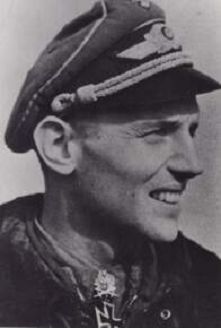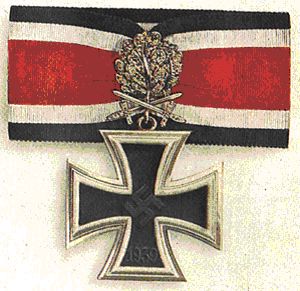


As 15 July would be the centenary of the Battle of Delville Wood, the chairman asked the audience to stand in silence as a mark of commemoration and respect. The Chairman accompanied by several members would be laying a wreath on Sunday 17 July at the Transvaal Scottish Regiment's memorial service.
The 50th anniversary of the MHS will be in October this year and members interested in attending a lunch were asked to sign a list after the meeting.
Jan-Willem reminded everyone that the talks given at MHS were recorded and are now available on Sound Cloud. Simply type in "soundcloud" in your Google search bar, when the main page of SoundCloud opens type in "sa military history society lectures" which will take you to our site. Just click on our page tab and you will then see all recorded talks. There is no need to sign in or register on the site.
The curtain-raiser of the evening was delivered by "Huffy" Pott who originally qualified as a chartered accountant and as a result travelled very extensively. His presentation was on the Battle of Bergendal and covered how he became involved in six years' research on it: wrote a book on the battle: and has now become a registered tour guide for the site. His research started as a result of a psychic experience at the place on his trout farm where the first two days of the battle took place.
The Bergendal Battle lasted from 21 to 27 August, 1900. All four of the 'Long Toms' were used here by the Boers. It was the last 'set' battle of the Boer War where army faced army - approximately 4 000 Boers against 20 000 British. It was also the only battle where the armies of Roberts and Buller fought together. It marked the start of the guerrilla war and caused President Kruger to leave South Africa.
The lecture was packed with fascinating quotes from letters written about the battle at the time and reminiscences of those involved in the battle which enthralled us all.
The main lecture was presented by Marius Whittle, who has lectured to us before, on The History and Evolution of the Fighter Ace. Marius took the legendary American, Robin Olds, who flew from 1943 in WWII to the Viet Nam War, as a classic example of the fighter ace.
The first person to be recognised as a fighter ace was Adolf Pérgoud in 1916 who was idolised by the French press. Originally, the prerequisite for the title was to 'neutralise' 5 planes but because of the late entry of the US into WWI this began to vary.
When fighter aces were asked what made an ace they all offered more or less the same criteria - (1) aggressiveness - willingness to engage often very close up (2) situational awareness and (3) luck.
Their scores tended to differ because nations had different criteria. The Germans counted an ace's score for the length of his career until he died whereas the Allies only counted his score on a tour of duty. Also, the area where the ace was flying was important as it might be a target-rich environment. For example, on the front in the USSR in WII, both sides were quickly and easily over the battlegrounds so they could fly multi-missions in one day. A single mission from the UK to Germany and back took many hours.
Then Marius touched on Manfred von Richthoven who achieved 80 kills during WWI. One of his favourite tactics involved using his wingmen to distract his adversaries before swooping in from above and delivering a punishing barrage of machine gun fire. The Baron often claimed pieces of his downed enemies' planes as trophies, and he even commissioned a set of silver cups to commemorate the date of each of his kills. He was considered cold and calculating by his contemporaries and painting his Fokker triplane bright red earned him the nickname 'The Red Baron', although this really came into vogue after his death. Another German ace of this time was Oswald Boelke with 40 kills. He worked out a set of aerial manoeuvres which were enthusiastically followed by German pilots. René Fonck was a marksman of note with 75 kills although he was considered eccentric as he kept a stork as a pet. Mention must also be made of the Englishman, Charles George Gass MC who had the most victories - 39 - of any observer flying with different pilots during WWI.
Our lecturer then turned to WWII and the German aces who had begun their careers in the Condor Legion during the Spanish Civil War. Notably, there was Adolf Galland with 104 kills and Werner Mölders [101]. Mölders started the 'finger four formation' and eventually achieved the Knights Cross with oak leaves, crosses and diamonds. Also mentioned was Hans-Joachim Marseille who scored 158 kills in the Western Desert for which he received the Star of Africa.
South Africa's own 'Sailor' Malan scored 33 and gave the RAF his 'Ten Rules of Air Fighting'.
There was a group of two known as the 300 Club both of whom were on the Russian Front. Gerard Barkhorn scored 301 and Erich Hartmann, who achieved the highest score ever with 352 kills, was awarded the Knights Cross with oak leaves, crosses and diamonds.
Next, we were introduced to the aces of the USSR during WWII. Russia rather shied away from the idea of fighter aces as they preferred to focus on communal effort and heroism. However, Ivor Kozedub had an acknowledged score of 62 and was awarded the Hero of the Soviet Union no less than three times. One of two female aces was Lydia Litvak with a score of 12 but she disappeared without trace during the war.
In the Pacific area of WWII, the Japanese ace Saburo Sakai had a score of between 28 and 64 because of the very different standards applied by the Japanese military. This theatre of the war also saw US aces Richard Bong and Thomas Maguire.
The Korean War put the fighter aces in a jet vs. jet conflict which altered the modes of aerial battle. Today, the fighter ace may be becoming a thing of the past because of the possibly huge arenas of war and the high levels of technological assistance. There was even a question about whether downing drones should or should not count towards an ace's score!
Pat Henning
Scribe
Due to technical difficulties not all versions of this newsletter show the photographs which are presented below:

Erich Hartman

Knights Cross
FORTHCOMING LECTURES
Johannesburg:
For Cape Town details contact Johan van den Berg 021-939-7923 warbooks@mweb.co.za
For Eastern Cape details contact Malcolm Kinghorn 041-373-4469 culturev@lantic.net
For Gauteng details contact Joan Marsh 010-237-0676 scribe@samilitaryhistory.org
For KwaZulu-Natal details contact Ken Gillings 031-702-4828 ken.gillings@mweb.co.za
* NOTE*
Fast mirror and backup site BOOKMARK
FOR REFERENCE Main
site * NOTE*